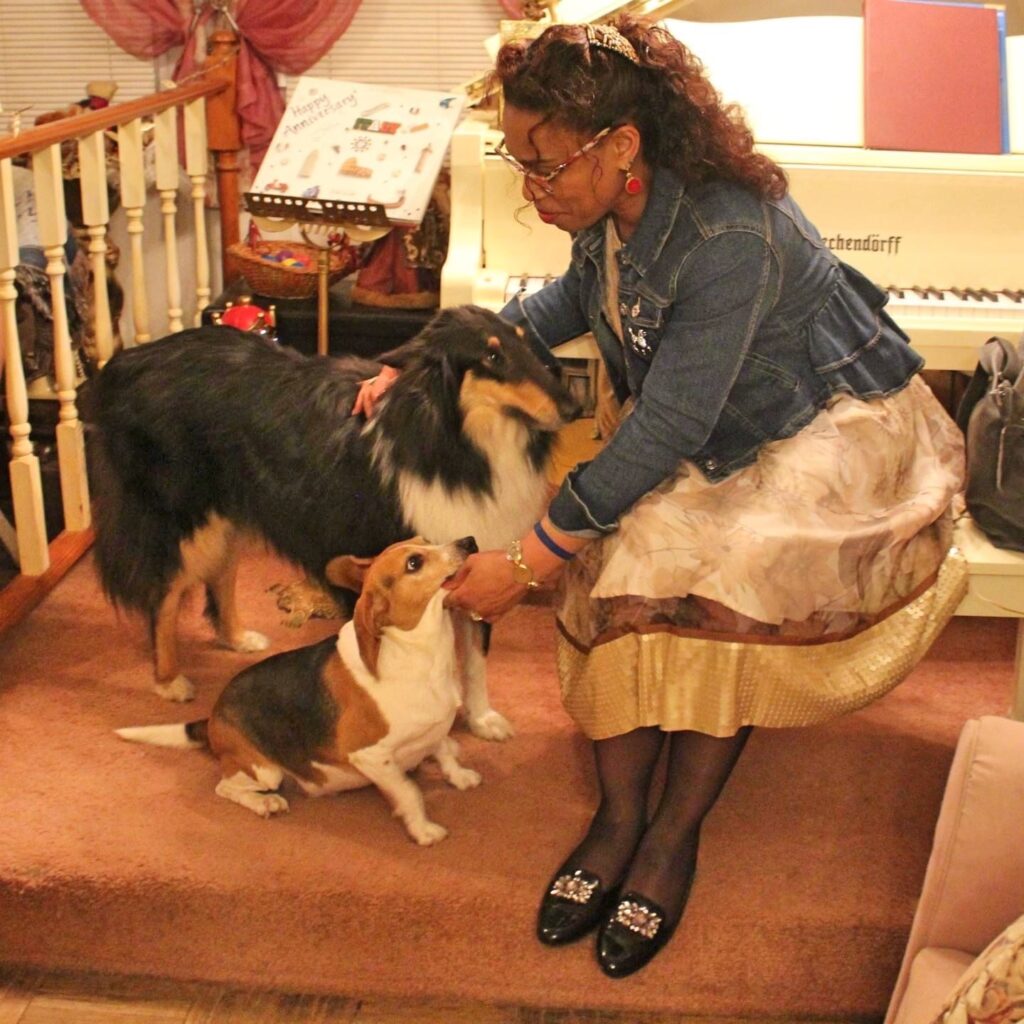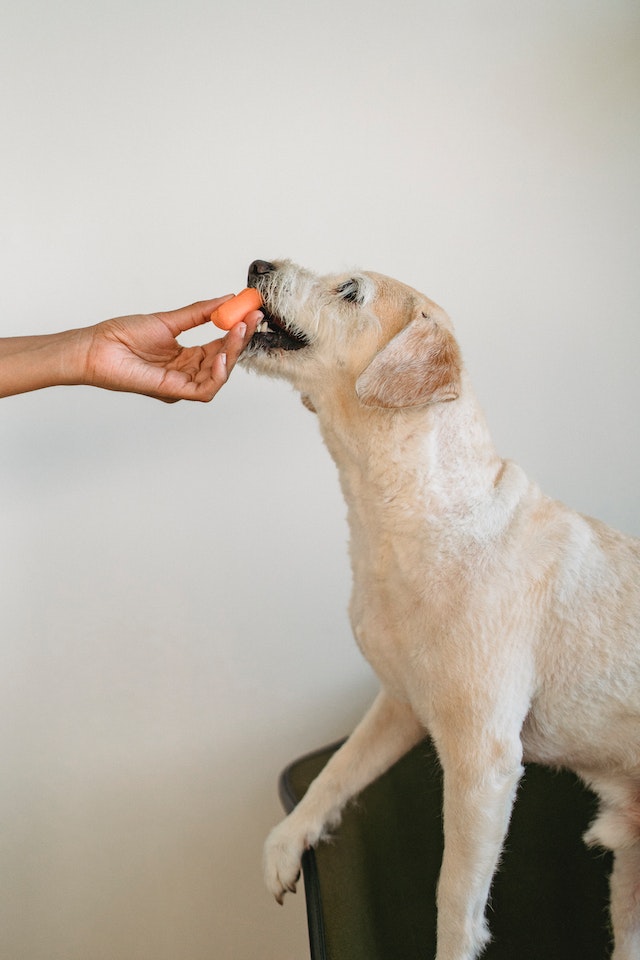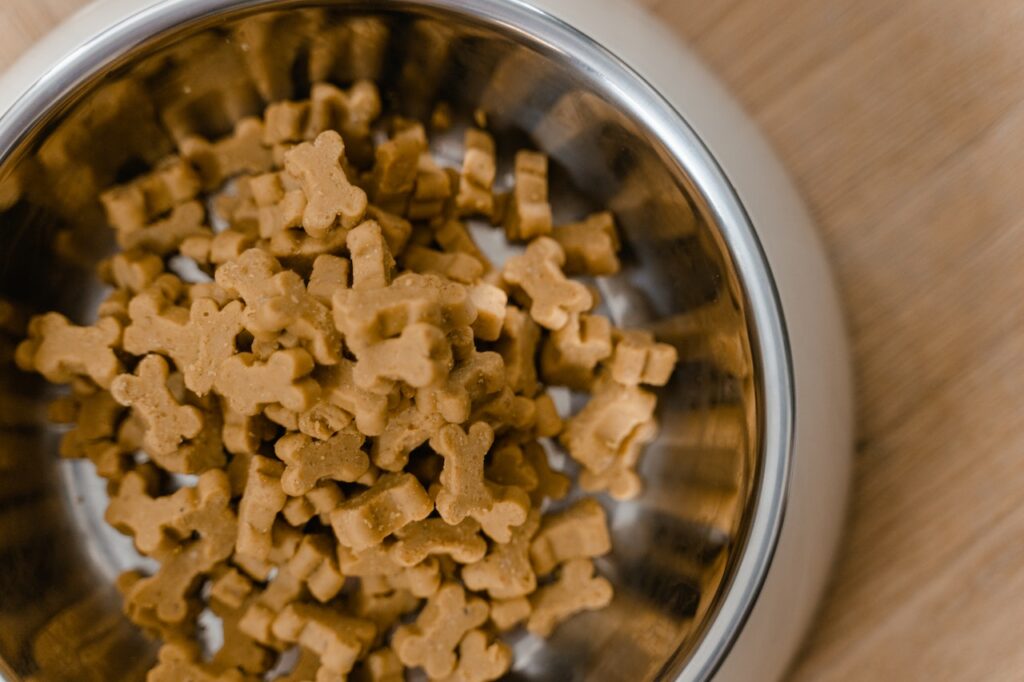by JTwisdom | Apr 8, 2024 | Pets |
Being a dog owner is a long-term commitment. Knowing that you will be responsible for the life you are raising in your house is one thing when you have a family, but it’s a whole other ball game when you have a pet. Dogs can’t tell you when they feel sick or sad.
Not in so many words, anyway. In a practical sense, it’s good to understand what makes a healthy dog so that you can keep on top of their health and save your budget. An unhealthy dog can become very expensive so the more you look after your dog with a regular multi-vitamin for dogs. And frequent veterinary visits, the better. Before you search for your brand new best friend, let’s look at some of the ways you can make buying a dog an easy choice.
 Image source: Pexels
Image source: Pexels
– Should you buy a puppy or a senior? Purchasing a puppy is adorable, but it takes a lot of work, and they have tons of personality, which means you have a lot to learn. It’s essential to remember that they will require a lot more time and attention than a senior dog would. Training and socializing takes a lot of time, so if you can’t devote this time to it, then make sure you seek a dog of a different age. Senior dogs are often less healthy than puppies, but they are trained and more your speed. You have to ensure that you are conditioned into their health issues before purchasing.
– Is your dog active or calm? Dog walking is an extremely important part of the day for a dog. No matter the size or breed of the dog you have, you need to ensure that you are giving them adequate exercise out of the house. Otherwise, they can become destructive and anxious. If your lifestyle doesn’t allow you to walk a dog at least once or twice a day, then you should consider a more low maintenance type of pets, such as a cat that can remain indoors. Some dog breeds are highly active by nature, which means that you have to be on top of this at all times.
– Are you considering a small dog or a big dog? Larger dogs make larger poops, and they also require a lot more food. They also need much more space than a Chihuahua or a toy poodle. Larger dogs have more endurance, but they will cost you a lot more money in terms of food budgets and cleaning up. Smaller dog breeds are more suited to smaller environments. If you live in a mobile home or an apartment, you might find a small dog breed like a Chihuahua a better option. Caring for smaller dogs is also cheaper because they eat less and are lower maintenance.
by JTwisdom | Feb 20, 2024 | Pets |
Adopting a kitten may just be one of the best experiences of your life. They’ll keep you company, offer fun, and be the perfect furry siblings for your kids. Did you know that cats can even be trained to provide emotional assistance?!
But becoming a cat parent can also feel overwhelming – especially if this is your first time as a pet owner. Fortunately, you don’t have to be alone in this! In this guide, we’ll cover all you need to know about getting your home ready to welcome a new kitten. We’ll also talk about the key factors to look for in a good vet – a professional figure who can guide you through the challenges of becoming a cat parent!
 Image: Freeepik
Image: Freeepik
Pro tip: Looking to make things easier? Involve your whole family by teaching your kids how to treat pets with love and compassion!
Understanding and Providing for Scratching Behavior
As a pet parent, you’ll soon discover that kittens have instincts to scratch! While this is entirely normal, the last thing you’ll want is to sacrifice your couch or chairs! That’s why providing them with an appropriate outlet is crucial.
For example, investing in good-quality scratching posts can help protect your furniture and curtains. If you want options matching your home design and space needs, different types include free-standing, wall-mounted, or even corner scratching posts. Unsure which one to choose? Start with an essential alternative, then experiment to see what your kitten prefers!
Kitten-Proofing Your Home: Essential Steps To Keep Your Pet Safe
Bringing home a small kitten is just like looking after a small child! They’ll be drawn towards exploring cabinets and playing with cables. Because of this, it is important to be mindful of loose cords that can be chewed on, medicines, and other chemicals that may cause harm. Ideally, you should lock or store away potentially dangerous items and secure windows that can pose a threat. Last but not least, be sure to store away – at least for some time – those valuable items that can be easily broken.
Ensuring Freedom To Roam
Once adequately trained, you can let your kittens roam through your garden or terrace. This is the best way to allow them to enjoy exciting adventures over the day and keep them entertained when you are at work. But how can you keep your home secure in the meantime? Solutions such as sliding glass pet door installation can help you modify your access to the garden or outer area to ensure that your pets can roam free without compromising the security of your home.
Choosing the Right Kind of Litter for Your Kitten
You must train your kitten correctly during the first days and weeks at home. This will help establish a relationship of care and respect between you and your pet! For this, you’ll need to choose a type of litter that feels safe and comfortable for your kitten.
Speak to a specialist to understand what litter is best for your furry friend. And remember, your kitten may try to taste the litter at first – so you should find a safe type that won’t harm their digestive system!
What To Keep In Mind When Looking for A Good Vet
Finding a trustworthy vet isn’t always easy – especially as each kitten and pet parent may have unique needs. In any case, some of the must-haves to look for in a veterinarian include:
- Look for local recommendations from friends and family
- Check their online reviews
- Set up an appointment to get a first-hand experience of your chosen clinic
- Ask whether they accept walk-ins and whether they are available after-hours
- Check the range of services offered, as well as their price
- Learn more about how emergencies are covered
Giving The Gift of (Play)Time: Invest in Toys and Rethink Your Routine
Playtime is vital for your kitten’s development and bonding with you. Because of this, you should emphasize finding suitable toys – and don’t forget to look at your schedule to find enough time to dedicate to your kitten. According to guidelines by the Humane Society, it’s best to play at least two to three times a day, for about 15 minutes each time, using interactive toys. This helps your kitten stay active and happy and satisfies their instincts of chasing and hunting. The routine also enables you to create a stronger bond with your little furball!
Nutrition Basics: What to Feed Your Kitten
It goes without saying that proper nutrition is essential for the healthy development of your kitten. However, striking the right balance and finding the best food for your pet isn’t always straightforward. Although each kitten is unique – and you should seek the opinion of a specialized vet – you should keep in mind the following guidelines:
- Kittens generally need up to twice the energy intake of adult cats
- They may have particular dietary requirements
- Opt for kitten-specific food, which is specifically formulated for the nutrient-rich diet kittens require
- Prioritize high-quality protein sources like chicken, fish, or turkey
- Avoid food with artificial colors, flavors, or unnecessary fillers
Giving your kitten the wrong food can lead to serious health problems – so get it right by speaking to a vet!
by | May 13, 2023 | Pets |
CIao Lovelies!
It’s National Dog Mom’s Day!
I found out today and almost missed it. However, the second Saturday in May is National Dog Mom’s Day. According to nationaldaycalendar.com send out a chorus of yips, barks, and howls of praise for all the dog mommas!
Use #Dogmomsday to share on social media.
Dogs have been a part of my family since I was three years old. My first dog was like my little brother; my mother named him Mucho. Mucho was a sable collie, and we grew up together. I will never forget that my Mother got him as a gift for me and she ordered him from Sears, and he came to our house in a wooden box with holes in it. My dad cracked open the box with an ax and was in the box with some food and a bowl of water. He was handsome, loving, smart, and kind. When Mucho became more mature, my parents thought he needed a little brother, so Yukon, the Alaskan malamute, joined the family. In future posts, I plan to write a series of stories about the pups that are forever imprinted in our family.

I wanted to share my puppies, Seppe and Lucca, with you on National Dog Mom’s Day! They love unconditionally, and I must admit I didn’t think of myself as a Dog mom; however, my husband and I train them and ensure they are well taken care of.

by | Jan 9, 2023 | Pets |
As a dog owner, you want to ensure that your furry friend gets all the nutrients they need to stay healthy and happy. But with so many different types of dog food on the market, it can be tough to know what to choose. Can dogs eat mussels? This information should answer questions like this. Here are some of the most nutritious food options for your dog:

Photo by Samson Katt
Meat: Dogs are carnivores, so it’s essential to make sure they get plenty of animal protein in their diet. Look for dog food made with real meat, such as chicken, beef, or lamb, as the first ingredient. Avoid dog food that relies on meat by-products or meals, as these are lower quality protein sources.
Vegetables: While dogs don’t need as many vegetables as humans do, they can still benefit from the nutrients in vegetables such as sweet potatoes, green beans, and peas. These can help provide essential vitamins, minerals, and fiber to support a healthy digestive system.
Fruits: Fruits can also be a nutritious addition to a dog’s diet. Apples, blueberries, and cranberries are all high in antioxidants and can help support a healthy immune system. Just be sure to remove any seeds or pits, as these can be dangerous for dogs to eat.
Grains: While dogs don’t need a lot of grains in their diet, they can still provide essential nutrients such as B vitamins and fiber. Look for whole grains such as brown rice or oats rather than refined grains like white rice or corn.
Oils: Healthy fats are essential for a dog’s coat and skin health and brain development. Look for dog food that contains oils such as fish oil or flaxseed oil.
In addition to these nutritious ingredients, it’s also important to choose dog food appropriate for your dog’s age, size, and activity level. And as with any significant changes to your dog’s diet, it’s always a good idea to consult your veterinarian before making any changes.
Balance is key: Just like human nutrition, it’s essential to strive for balance when feeding your dog. Aim for a diet that includes various proteins, vegetables, and grains. Avoid dog food made up of mostly one ingredient, as this can lead to an imbalanced diet.
Quality matters: When it comes to dog food, not all brands are created equal. Look for high-quality brands that use real, whole ingredients and avoid artificial preservatives and additives. It may cost a little more, but investing in your dog’s health is worth it.
Homemade is an option: If you want even more control over what goes into your dog’s diet, consider making their food at home. This can be an excellent option for dogs with food allergies or sensitivities or those needing a specialized diet. Be sure to consult with a veterinarian or a canine nutritionist to ensure that you provide all the necessary nutrients.
Don’t forget about treats: Treats can be a great way to bond with your dog and reward them for good behavior, but it’s important to remember that they should only make up a small portion of your dog’s diet. Choose treats made with whole, nutritious ingredients, and be mindful of the calorie content.
Keep an eye on portion sizes: It’s easy to overfeed your dog, especially if they beg for more food or have a habit of finishing everything in their bowl. Be sure to measure out your dog’s food and treats according to their age, size, and activity level to ensure that they are getting the right amount of food.
Pay attention to your dog’s weight: It’s important to keep an eye on your dog’s weight and ensure that they are healthy for its size and breed. If your dog carries too much extra weight, it can strain its joints and increase its risk of health problems such as diabetes and heart disease. On the other hand, if your dog is underweight, it may not be getting enough nutrients. Work with your veterinarian to determine the ideal weight for your dog and adjust its diet accordingly.
Consider your dog’s life stage: Different life stages (puppyhood, adulthood, and senior age) have different nutritional needs. For example, puppies have a higher energy requirement and need more protein and calories to support their growth and development. Senior dogs, on the other hand, may need fewer calories and more fiber to support their digestive health. Make sure to choose a food formulated for your dog’s specific life stage.
Keep an eye on food expiration dates: Just like human food, dog food can expire and lose its nutritional value over time. Check the expiration date on your dog’s food and treats, and replace them as needed.
Don’t forget about hydration: Water is an essential part of a dog’s diet, and it’s crucial to ensure that your dog is getting enough to drink. Keep a fresh bowl of water available at all times, and consider adding a little bit of broth or low-sodium chicken stock to your dog’s water to make it more appealing.
Don’t forget about dental health: A nutritious diet is vital for your dog’s overall health, but don’t forget about their dental health. Hard, crunchy dog treats and chew toys can help scrape away plaque and tartar, helping to keep your dog’s teeth clean. Be sure to choose products appropriate for your dog’s size and chewing strength.
The most nutritious food for dogs is a balanced diet that includes a variety of real, whole ingredients such as meat, vegetables, and grains. By choosing the right food for your dog, you can help ensure that they get all the nutrients they need to live a long and healthy life.
by | Jan 6, 2023 | Pets, Travels |
Nothing quite beats having a good vacation. For many people, dogs are a loved and cherished part of the family, and the thought of leaving them behind feels somewhat unfair. The good news is that in this day and age, it is easier than ever for you to take them with you. So many places cater to dogs, and this means that you can have the best time without having to leave your pooch behind.
Consider your Dog’s Needs
It does go without saying, but you have to consider your dog’s needs. Do not be naïve when someone allows dogs on their website. Ring ahead to confirm the pet policy and make sure that your dog is going to be able to come with you wherever you go. You need to check the number of dogs they allow if you have multiple pets. If you want to go on vacation but aren’t sure if your dog is going to be able to handle it, or if you have an older dog who may struggle with the journey then it may be more unfair to take them with you. In instances like this, hiring a pet sitting service is always the best way forward.

Source: Pexels (CC0 License)
Arrange a Visit
You have to make sure that your dog gets their general check-up done every year. Arranging a visit to the vet before you go on your trip away is essential, as your dog may come into contact with fleas, ticks, or even worms when they travel with you. If your dog isn’t chipped already, you should also consider getting this done. If you don’t, then you may find that if you lose your dog, you lower the chance of you being able to find them again, and this is the last thing you need when you are in a foreign country.
Plan Things to Do
Finding accommodation that is dog-friendly is just the start. It is imperative that you think about the bigger picture here. Before you go, list all the things you want to do and the places you want to visit. Find out what restaurants and cafes are open for you to visit, and also take the time to find out if there are any lovely walks. If you can do this, then you will soon find that it is easier than ever for you to have the best time away and that you can make sure that your vacation is everything you hoped it would be. If you skip out on this step, you may find that when you arrive at your destination, things aren’t as you hoped, and this can be a waste of time and money for everyone.
So there are things that you can do to try and make sure that you have plenty to do when out on your travels, and if you follow this guide, you should not have a problem taking your furry friend with you.
by | Oct 19, 2022 | Pets |
Has your pet suddenly stopped consuming its food? As a pet parent, that can be a significant concern for you, especially as your pets may not be able to communicate how they’re feeling or whether something is wrong. Your pet may lose the desire to eat due to illness, stress, or when they are simply getting older. Several pet owners go the extra mile to ensure that their pets are well-cared for, with studies revealing that about 7 out of 10 pet parents take their pets’ mental and physical health even more seriously than their own! You may be very passionate about your pet’s well-being and wonder how you can get them to eat well. Here are some easy tips and tricks to guide you.
Try different foods
Just as you may sometimes want to get creative with recipes to add some zest to your diet, you can also try different foods for your pet to gain their interest. However, it’s advisable to consult your vet before doing so. It will help if you read the ingredients on any pet food you want to buy to help you identify whether it’s ideal for your pet and whether it doesn’t contain any components your pet may be allergic to. Thankfully, there are several pet dishes you can try without compromising your pet’s health.

Pexel Photo
Use attractive food trays
Believe it or not, features such as the color of your pet’s bowl or its patterns can attract their interest and get them to eat. It would be best to keep these bowls as clean as possible to reduce the likelihood of your pet refusing their meal. It would also help to avoid leaving food in their bowl for too long, as it could develop an unpleasant smell. Instead, you should be conscious about filling their bowl with fresh food when it’s time to eat.
If you’re wondering how to make your pet’s feeding tray or bowl more attractive, you can consider covering them with customized sticker sheets. You can start by researching the standard sticker sheet size that fits the purpose.
Hand-feeding is messy but worth it
Hand-feeding your pet is a great way to encourage them to eat. Plus, it’s also a great way to show your pet you care and strengthen the bond between you two. Your pet may not want to eat from a bowl if it’s not feeling well. However, placing the food in your hand can give them the nudge they need to eat. You can begin by offering it food in your hands and encouraging it to eat. If your pet is still reluctant to eat even when you try hand feeding, you shouldn’t force it.
Consider the food texture
The texture of your pet’s food can go a long way in determining whether your pet will eat it or not. It’s best to give your pet foods that are soft enough to chew, especially when they don’t feel like eating. You might also consider feeding your pet meals that don’t need to be chewed for too long, so they don’t have to put in too much effort when eating. This way, you may convince them to eat; before you know it, they’ve eaten the whole meal.
The tips above are easy yet effective in getting your pets to eat. While applying these tips, resources such as pet care guides can help you through the steps of providing a healthy and happy life for your pet. If your pet still doesn’t eat after using these methods, you must take him to the vet to check for any underlying health problems.












Follow!